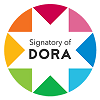Attachment, self-esteem and family functioning in high school students from the cities of Riobamba and Guano
DOI:
https://doi.org/10.37135/ee.04.12.02Keywords:
attachment, self-esteem, family functionalityAbstract
This research aimed to determine the relationship among the dimensions of attachment, self-esteem and family functioning in high school students from the cities of Riobamba and Guano, Chimborazo province, Ecuador. The study considered a quantitative approach, non-experimental, correlational, and cross-sectional. 341 high school students from the aforementioned educational units participated in this study, in which the following instruments were applied: the Camir-R attachment questionnaire, the Rosenberg self-esteem test and the FF-SIL family functioning test. The results showed a predominance of the female gender (277), and that safety was the best scored dimension (x̄=30.19). Significant differences were established between the worried and avoidant typologies (p<0.05). Self-esteem valued as high prevailed among women (51.53%), the moderately functional typology also predominated in the studied population (56.7% in women and 71.9% in men). The levels of correlation between the variables and dimensions and their meaning were diverse. The established conclusions support the importance of attachment for the proper development of self-esteem and family functioning.
Downloads
References
Bowlby J. Vínculos afectivos: formación, desarrollo y pérdida. Madrid, España: Morata. 1979.
Guzmán-González M, Carrasco N, Figueroa P, Trabucco C, Vilca D. Estilos de apego y dificultades de regulación emocional en estudiantes universitarios. Psykhe. 2016;25(1):1–13.
Morán J, Martínez C. El apego en la adolescencia: una revisión sistemática de la investigación latinoamericana durante los últimos 15 años. Rev Argentina Clin Psicol. 2019;28(2):172–82.
Tay Karapas K, Guzmán González M, Barrera Silva J, Lovys Tirado D, Olmos Córdova A. Propiedades psicométricas de la escala de experiencias en relaciones cercanas-estructuras de relaciones (ECR-RS) para medir apego en adolescentes chilenos. Salud Soc. 2015;6(1):78–93.
Solórzano Ramirez Y, Berrocal Chirinos B, Vilca Quiro W. Estilos de apego y conductas autodestructivas en agentes en actividad de la Policía Nacional del Perú de Lima. Rev Científica Ciencias la Salud. 2018;10(2).
Matos P. Estilos de apego en la relación de pareja y niveles del bienestar psicológico en estudiantes universitarios de una universidad privada de Lima. 2017;1–25. Available from: http://repositorio.urp.edu.pe/bitstream/handle/urp/1135/Patricia Matos %282017%29 Estilos de apego y niveles de ansiedad.pdf?sequence=1&isAllowed=y
Medina CJ, Rivera LY, Aguasvivas JA. El apego adulto y la calidad percibida de las relaciones de pareja: Evidencias a partir de una población adulta joven. Salud Soc. 2017;7(3):306–18.
García S, Gutiérrez G, Martínez N. Prevención en la relación de apego entre las madres adolescentes y sus hijos en la infancia temprana. 2016;2(3):30–5.
Rojas T. El apego como uno de los elementos fundamentales en el funcionamiento psíquico de víctimas reincidentes. Revista Electrónica de Psicología Iztacala. [Internet] 2020. 23(1),418-438.
Benlloch Bueno S. Teoría del Apego en la Práctica Clínica. Rev Psicoter. 2020;31(116):169–89.
Lacasa F, Muela A. Guía para la aplicación e interpretación del cuestionario de apego CaMir-R. Rev Psicopatología y Salud Ment del Niño y del Adolesc. 2014;24:83–93.
Balluerka N, Lacasa F, Gorostiaga A, Muela A, Pierrehumbert B. Versión reducida del cuestionario CaMir (CaMir-R) para la evaluación del apego. Psicothema. 2011;23(3):486–94.
Gómez E. Evaluación del apego en estudiantes universitarios. Horiz Med (Barcelona). 2012;12(3):42–6.
Lastra H, Yessica U. Estilos de apego emocional y satisfacción marital en los padres de familia del distrito de Huachón de Pasco, 2016. Resolucion [Internet]. 2016;1:6374. Available from: https://repositorio.upeu.edu.pe/bitstream/handle/UPEU/716/Hernan_Tesis_bachiller_2017.pdf?sequence=1&isAllowed=y
Santelices M, Guzmán M, Garrido L. Apego y Psicopatología : Estudio comparativo de los estilos de apego en adultos con y sin. 2011;XX:49–55.
García H, Siriano E. “Amigos con beneficios”: Salud sexual y estilos de apego de hombres y mujeres. Saude e Soc. 2016;25(4):1136–47.
Ching K, Tak L. The Structural Model in Parenting Style, Attachment Style, Self-regulation and Self-esteem for Smartphone Addiction. IAFOR J Psychol Behav Sci. 2017;3(1):85–103.
Passanisi A, Gervasi AM, Madonia C, Guzzo G, Greco D. Attachment, Self-Esteem and Shame in Emerging Adulthood. Procedia - Soc Behav Sci [Internet]. 2015;191:342–6. Available from: http://dx.doi.org/10.1016/j.sbspro.2015.04.552



















